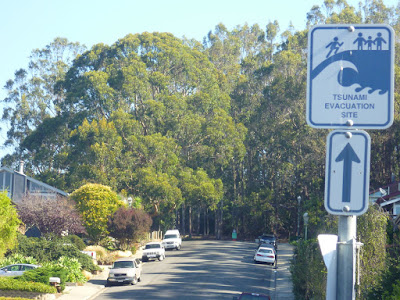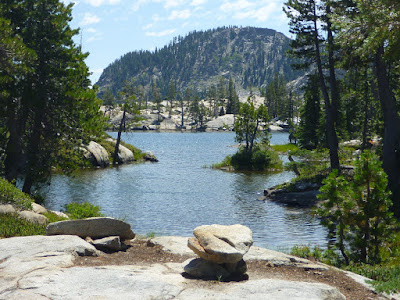 |
| Mastodon sketch along Keystone Canyon Trail |
Traveling Keystone Canyon Trail, you will pass a mastodon sketched on an informative panel, which explains in brief how the Peavine area and northwest Nevada was formed geologically:
About 200 million years ago, the rocks you see to the west were at the ocean floor. The North American continent was to the east. Underneath the surface, tension was mounting as the oceanic crust converged with the continental crust of the North American plate.
The ocean plate was forced down, under the western edge of the continental plate, turning the peaceful landscape into a chaotic jumble of activity. For millions of years the plates converged, scraping off oceanic rock onto the edge of the continent, and melting some of the oceanic crust that was forced deep into earth. As the shoreline extended westward, rocks that now form the Sierra Nevada Range and Peavine Mountain were beeing added to the edge of the continent.
About 20 million years ago, the region east of the Sierras began to be stretched apart, breaking up the crust into blocks. More recently, probably starting less than 5 million years ago, much of the Carson Range was uplifted.
Fossil discoveries indicate that Nevada was once home to large mammals such as elephantlike mastodons. The panel says:
2.5 million years ago the land of this region was flatter - lush and green, with plenty of lakes, and active volcanoes. It was a different world - not recognizable as the Peavine Mountain we know today. Many of the plants and animals would be strange to us - like the large furry, elephant-size MASTODONS that foraged on the lush vegetation.
About 10 years ago, the Peavine foothills were still cluttered with car wrecks. They were removed from hillsides and canyons. Corroding metal assemblies would be strange to us now. Steep, hillside-eroding dirt roads are getting replaced by switchbacking single-track trails. Non-motorized recreation activities are extending westward, building a recreational trail network from Reno to Verdi and into California all the way to the edge of the continent.




























































